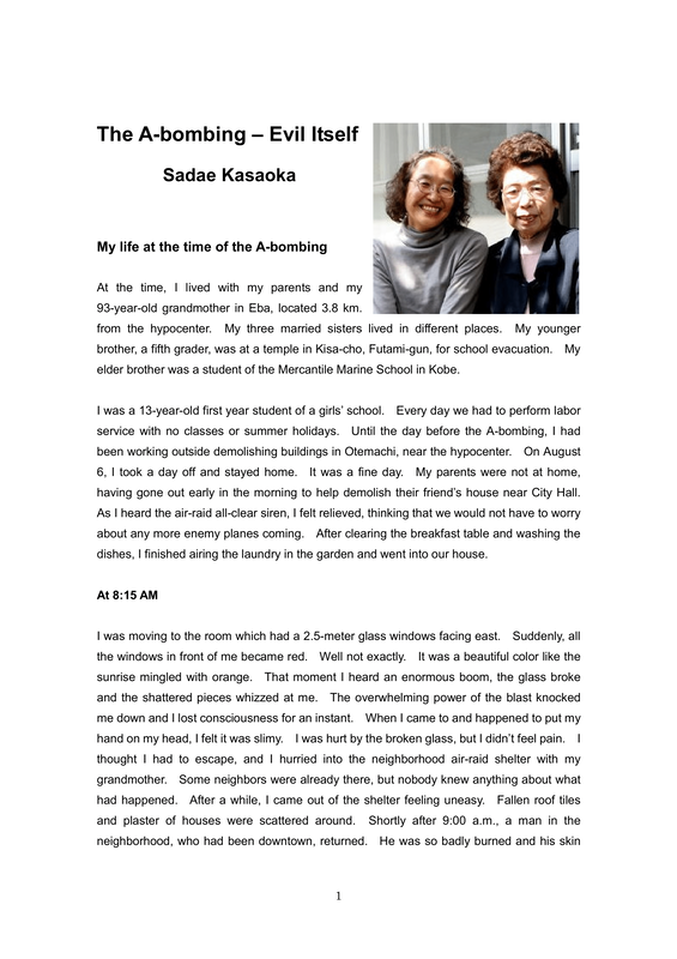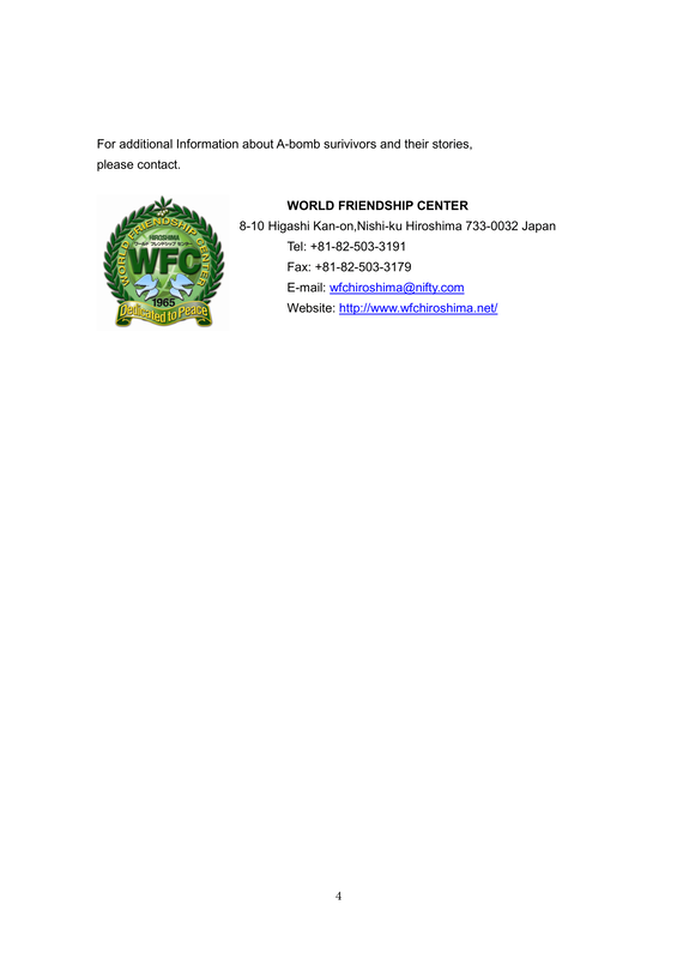|
In the 1960s, dozens of hibakusha — people affected by the atomic bomb — traveled around the world to tell their stories and plead for peace. The earliest of these trips were organized primarily by Barbara Reynolds who had moved from the United States to Hiroshima in the 1950s and who had become profoundly affected by the stories of hibakusha. From 1958 on, Barbara Reynolds committed her life to helping hibakusha share their experiences of the bomb to the world in order to prevent more suffering from nuclear weapons. Not only did she organize world speaking tours for hibakusha, but she also founded the Hiroshima World Friendship Center in 1965 to form a permanent site for hibakusha to educate the world about what happened to them. But many thousands more had suffered the effects of the a-bomb and kept their traumatic stories private for years. Some didn’t share their stories for decades. Sadae Kasaoka was one of those who suffered in silence until 2000, when she happened to be invited to her grandchildren’s elementary school as one of the local hibakusha. She shared her story with the students and was very moved at the theatrical performance the students made based on what she told them. After that, it was like a dam had broken: after she retired in 2005, Kasoaka devoted much of her time to sharing her story to Japanese and foreign visitors through the Peace Memorial Museum, the Hiroshima World Friendship Center, and other similar organizations. Kasaoka also traveled to other countries to tell her story, including the United States, and has become a prolific public speaker about the atomic bomb. Below is a collection of excerpts from Kasoaka’s writings and interviews about her experience in 1945 during and immediately after the bombing of Hiroshima, as well as a brief explanation of her motivation for sharing her story so widely and with such vigor so late in her life. Warning: the following includes graphic descriptions of extreme burns and other injuries, as well as other upsetting imagery. You may read the accounts of other hibakusha at the link below. https://www.wfchiroshima.org/english/hibakusha-stories/ —
In June, the Golden Rule ship, which first inspired Barbara Reynolds to begin her “forbidden voyage” into antiwar activism, will be visiting New London, CT. As the world’s first modern protest ship and a vessel originally operated by the CNVA, the Golden Rule has strong historical ties to VPT. To stay in the loop about events related to the coming of the Golden Rule, sign up for our newsletter: http://eepurl.com/Oqf99 — Support Us We commit a significant amount of research and writing to produce A Peace of History each week. If you like our weekly posts, please consider supporting this project with a one-time or recurring donation. Your gift will be used to continue producing more A Peace of History posts as well as the greater mission of VPT. You may type in however much you would like to give; contributions of all sizes are appreciated. Click this link to learn more about what we do and how you can donate: https://www.mightycause.com/organization/Voluntown-Peace-Trust — Sources Kasaoka, Sadae. “Losing both my parents all at once, I had no words to describe my loss.” Hiroshima Speaks Out. https://h-s-o.jp/kasaoka/post_en/05/ Kasaoka, Sadae. “The A-bombing — Evil Itself.” World Friendship Center. https://www.wfchiroshima.org/english/wp-content/uploads/sites/2/2016/09/KasaokaStoryE.pdf Comments are closed.
|
AuthorWrite something about yourself. No need to be fancy, just an overview. Archives
March 2023
Categories |





 RSS Feed
RSS Feed